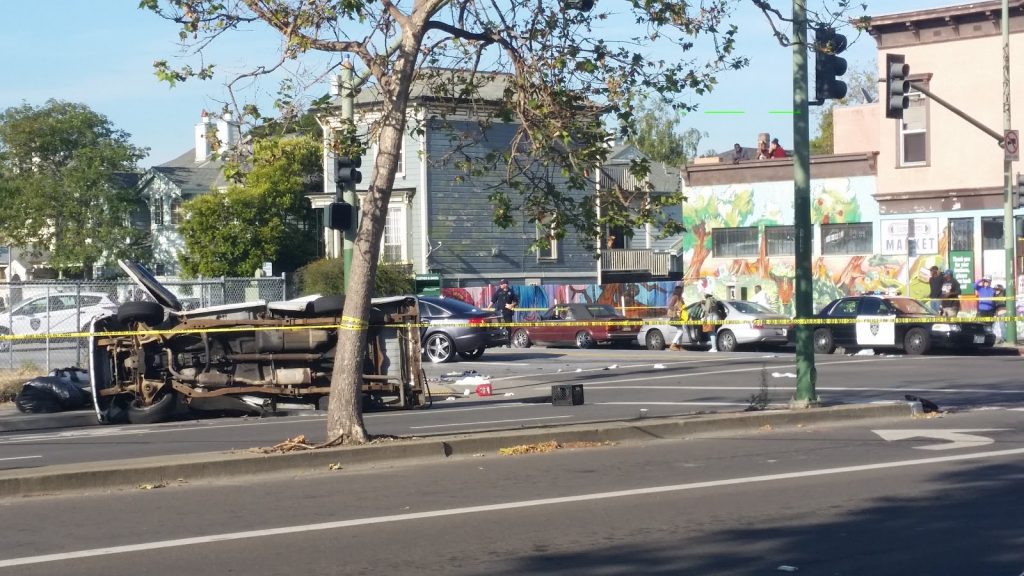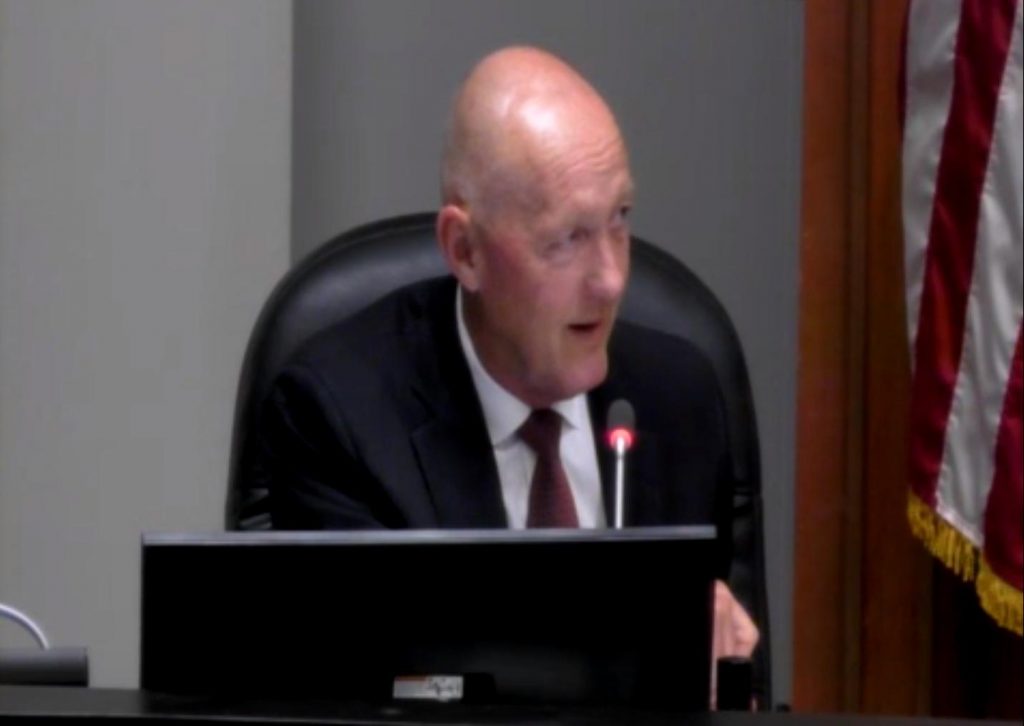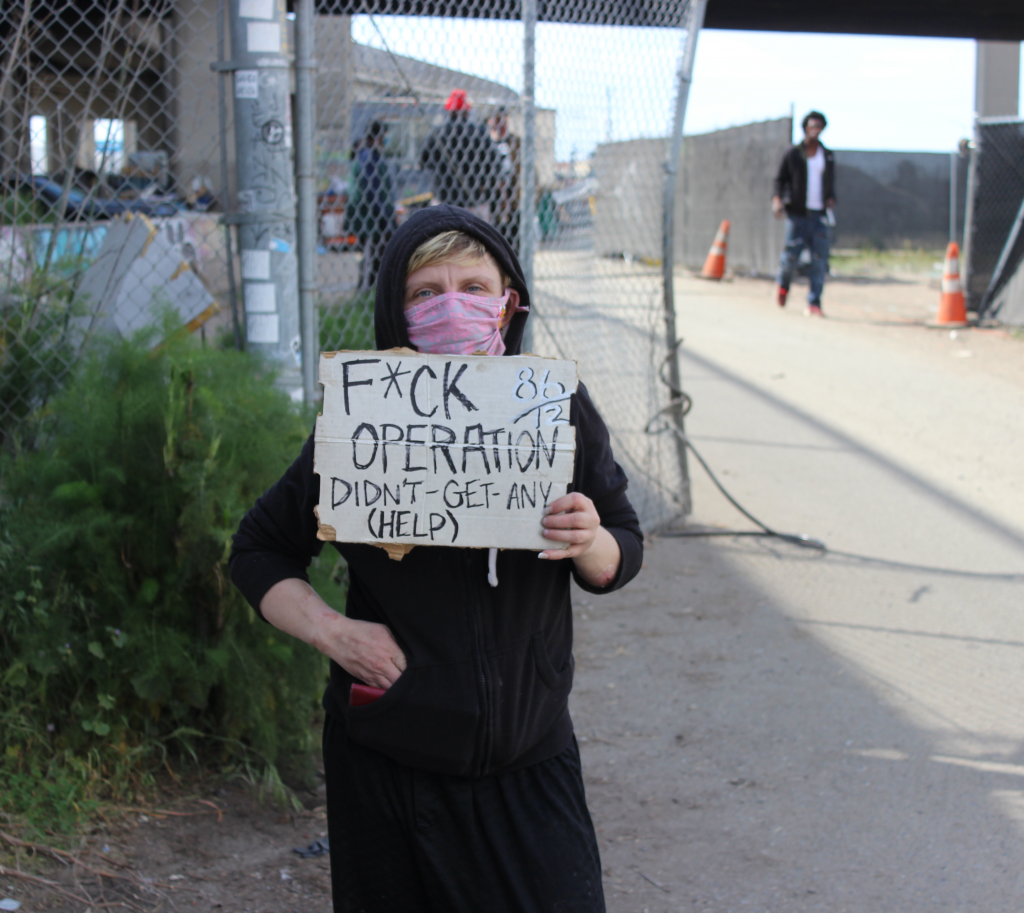Officer Nicole Rhodes was having a hard time seeing Demouria Hogg when she shot him through his car’s windshield.
Rhodes and more than a dozen other Oakland police officers had been trying to wake Hogg for over an hour after they found him unconscious behind the wheel of a BMW on June 6 last year. Rhodes’ sergeant had placed her at the front bumper of the car, looking straight at Hogg, to provide lethal cover while other officers broke out the driver’s side window and hit him with a Taser. Rhodes said she was having a difficult time seeing Hogg through the glare of the windshield, but she told investigators that she saw him lean back and reach with his left hand toward the passenger seat, where she knew there was a gun.
A department rookie who had just graduated from the city’s police academy six months earlier, Rhodes suddenly found herself anonymously embroiled in the escalating national controversy over police shootings. Hogg’s death was the first fatal shooting incident by an Oakland police officer in more than two years. And like others nationwide, the incident sparked protests in Oakland, as many demanded answers that were slow to come.
According to an Alameda County District Attorney investigation that was recently obtained through a Public Records Act request, the shooting did not violate Oakland police policies and was determined by a DA investigator to be justified.
Rhodes’ name, and what exactly caused her to fire two shots into the BMW, are now public following the release of a February 8 report by Deputy District Attorney Briggitte Lowe clearing Rhodes of any criminal charges. The police department’s internal review board also found no fault with her actions, according to officer Rhodes’ attorney Stephen Betz.
The Oakland Police Department refused to name Rhodes for months, claiming there were credible and specific threats that had been made against her. Under a 2014 state Supreme Court decision, departments can withhold the names of officers involved in shootings only in cases where there are specific threats against the officer. Where there are no specific threats, the names must be made public. But even after Rhodes’ name became a public record through the district attorney’s office, Oakland police still refused multiple requests to release it. In an email, Oakland police spokeswoman Officer Johnna Watson cited “creditable threats and officer safety concerns in connection with this shooting.” She declined to elaborate, however.
Rhodes’ attorney Betz said he wasn’t aware of any specific threats against her. “I do believe the department was concerned about her safety at first because this shooting gained some controversy in the community, but I am unaware of anything specifically directed at her,” Betz said. “If there was something more concrete than general concern, it was never shared with me.”
Attorney John Burris, who is representing Hogg’s family in one of two lawsuits, said he hasn’t received any information about threats against Rhodes either. “We haven’t had any cases in recent memory where there’s been any real threat,” Burris said. “That typically doesn’t happen here in Oakland, other than the one case we had with Oscar Grant. There hasn’t been a highly charged case since then causing protests on a sustained basis.”
While the district attorney’s report sheds new light on the moments leading up to the shooting, some details provided by the multiple officers who witnessed the shooting appear to be inconsistent. The officers were told not to talk to each other immediately afterward, and were interviewed separately, as is standard procedure, according to the DA’s report.
On Saturday, June 6, last year, Oakland firefighters came upon a gray four-door BMW 520i at about 7:30 a.m. as it was parked, still running, in a traffic lane on Lake Park Avenue near Lakeshore Avenue, essentially an off-ramp for the 580 freeway. The ramp sends drivers into a bustling commercial district full of bars, restaurants and stores. A 76 gas station is to the right of where Hogg was parked, and a Trader Joe’s grocery store is beyond that. Lake Merritt is a few blocks to the left, and straight ahead Oakland’s biggest farmers market was just getting underway, with farmers setting up booths and customers slowly arriving.
The firefighters peeked through the darkly tinted windows of the BMW and saw a gun on the passenger seat, so they retreated and radioed the police. Once police officers arrived, they set up a perimeter hundreds of feet from the car, pushing back the people in the farmer’s market, blocking the freeway off-ramp and shutting down pedestrian traffic on Lakeshore.
Oakland police tried for over an hour to wake Hogg. They placed spike strips around all the car’s wheels so if Hogg awoke and tried to escape by driving away his tires would flatten. They made commands over a loudspeaker and blasted their sirens. They fired beanbag rounds at his car, shattering a tail light, and they tried to break the windows with beanbag rounds also, but were unable to. Two officers then approached the car and broke the passenger windows with a hook.
Some of the officers reported that they heard Hogg talk as they broke his windows, saying either “Hey, what are you doing?” or “What’s going on?” or “What the hell?” or “What the fuck?” After he went back to not moving and appeared to be asleep. Some officers thought they might have seen his hands move despite their difficulty seeing into the car. After breaking the windows, the officers retreated and announced more commands over a loudspeaker. But according to the DA’s report, they received no response from Hogg.
During the standoff, they checked the car’s license plates and learned it was reported in connection to a burglary in San Francisco the night before and had been involved in a police chase.
Sergeant Wilson Lau then came up with a plan for two officers to distract Hogg through the broken passenger side window while another officer broke the driver’s side window with a crowbar. Rhodes was to provide lethal cover from the front of the car, pointing her gun at Hogg through the windshield. Officer Daniel Cornejo-Valdivia was assigned to hit Hogg with a Taser as soon as the window was shattered. Cornejo-Valdivia yelled “Taser, Taser” and fired after the window was broken, but he didn’t realize Hogg had been shot by Rhodes until after they pulled him through the broken window.
There were differing accounts among the officers as to whether Hogg had actually been hit with the Taser as he was shot by Rhodes. Rhodes told investigators that Taser prongs were still in Hogg as the other officers pulled him through the broken driver’s side window. But Cornejo-Valdivia, the officer who fired the Taser, was unsure whether he hit Hogg. At least one other officer said Hogg was not hit with the Taser.
There also seems to be some doubt as to whether Rhodes yelled commands at Hogg before shooting him. According to the DA’s summary of the shooting, Rhodes yelled “put your hands up” twice before she shot, but when she was interviewed Rhodes said she didn’t remember yelling any commands.
Radio traffic indicates police moved in to take Hogg into custody just before 8:45 a.m. “They’re taking the suspect into custody right now,” one officer said over the radio. Moments later an officer can be heard saying “get medical here right now.”
Hogg was rushed to a hospital but died later that day. An autopsy showed he had a single bullet wound in his chest. The round had damaged his kidney, lungs and aorta before becoming lodged in his spine. There was alcohol and opioid pain medication found in his system. Hogg had been shot once before in an undated incident, according to his autopsy report. Another bullet from the previous shooting was found still lodged in his right pubic bone. The bullet fired from officer Rhodes’ gun was determined to be his cause of death.
Since the shooting, two separate lawsuits have been filed in federal court by Hogg’s survivors. The first, filed on October 30, is on behalf of Hogg’s mother, Allene Hutchinson and his unnamed daughter with Desiree Richards. The other was filed on April 2 on behalf of Hogg’s unnamed son, who has a different guardian, Teandre Butler.
“We don’t think the shooting was justified,” said Burris, who represents the family in the second lawsuit. Burris said the officers used improper tactics of confrontation in shooting beanbags at the car, breaking out the windows and firing a Taser at Hogg in an effort to wake him up. “What do you expect the person to do?”



